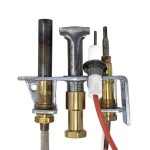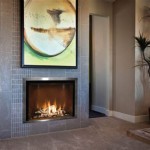Electric Fireplace Remote Control Instructions
Electric fireplaces offer a convenient and aesthetically pleasing alternative to traditional wood-burning fireplaces. A key component of the modern electric fireplace is the remote control, which allows for adjustment of the flame effect, heat output, timer settings, and other features from a distance. Understanding the functionality of the remote control is crucial for optimal use and enjoyment of the electric fireplace. This article provides a comprehensive guide to interpreting and utilizing the various functions typically found on electric fireplace remote controls.
The design and specific functions of an electric fireplace remote control can vary depending on the manufacturer and model. However, several common features are typically present. These include power on/off, flame adjustment, temperature adjustment, timer settings, and auxiliary functions such as ambient lighting control or digital display options. Familiarizing oneself with the specific layout and symbols on a particular remote control is the first step in mastering its operation. Carefully review the user manual provided with the electric fireplace, as it contains detailed instructions specific to that model.
Key Point 1: Understanding Common Remote Control Buttons and Functions
Remote controls for electric fireplaces often feature a series of labeled buttons, each corresponding to a specific function. These buttons generally include the following:
*Power Button:
This button, often marked with a universal power symbol (a circle with a line extending from the top), turns the electric fireplace on and off. Some models may have a separate power switch on the fireplace unit itself, which must be in the "on" position for the remote control to function. *Flame Adjustment:
These buttons control the intensity and appearance of the flame effect. Typically, there are multiple levels of flame intensity, allowing the user to adjust the flame to their desired preference. Some models may offer different flame color options or dynamic flame patterns. The buttons might be labeled "Flame," "Intensity," or depicted with flame icons of varying sizes. *Temperature Adjustment:
These buttons control the heat output of the electric fireplace. Some models offer multiple heat settings, while others provide a thermostat-controlled temperature range. The buttons are often labeled "Heat," "Temp Up," and "Temp Down," or marked with plus (+) and minus (-) symbols. The temperature is usually displayed on the fireplace's control panel or on the remote control itself. *Timer:
The timer function allows the user to set a specific duration for the electric fireplace to operate before automatically shutting off. This is useful for saving energy and preventing overheating. The timer button is usually labeled "Timer" and may be configured in increments of hours. *Auxiliary Functions:
Depending on the model, the remote control may include buttons for controlling other features such as ambient lighting, adjusting the brightness of the digital display, or activating a child safety lock. These buttons will be labeled according to their specific function.It is essential to understand the symbols and labels used on the remote control to effectively operate the electric fireplace. The user manual should provide a clear explanation of each button's function and how it interacts with the fireplace unit.
Key Point 2: Troubleshooting Common Remote Control Issues
Like any electronic device, electric fireplace remote controls can sometimes experience problems. Common issues include unresponsive buttons, diminished range, and display malfunctions. Troubleshooting these issues often involves simple steps.
*Battery Replacement:
The most common cause of remote control malfunction is depleted batteries. Replacing the batteries with fresh ones is the first step in troubleshooting any issue. Ensure the batteries are inserted correctly, matching the polarity markings (+ and -) inside the battery compartment. *Obstructions:
Obstructions between the remote control and the electric fireplace can interfere with the signal. Ensure there are no objects blocking the line of sight between the remote control and the infrared (IR) receiver on the fireplace unit. *Signal Interference:
Other electronic devices, such as televisions and stereos, can sometimes interfere with the remote control's signal. Try moving the electric fireplace or the interfering device to see if it resolves the issue. *Remote Control Sensor:
The remote control sensor on the electric fireplace might be blocked or defective. Clean the remote sensor with a soft cloth.*
Synchronization:
Some electric fireplaces require the remote control to be synchronized with the main unit. This process usually involves pressing and holding a specific button on the remote and the fireplace simultaneously. Refer to the user manual for detailed synchronization instructions. Some units are Bluetooth enabled for enhanced range and decreased potential signal interference. *Factory Reset:
Some remote controls have a reset function that restores them to their original factory settings. This can resolve issues caused by incorrect programming or accidental settings changes. Consult the user manual for instructions on how to perform a factory reset. Remove batteries before attempting reset.If these troubleshooting steps do not resolve the issue, it may be necessary to contact the manufacturer or a qualified technician for assistance.
Key Point 3: Advanced Features and Programming
Many modern electric fireplaces offer advanced features that can be controlled via the remote. These features may include programmable timers, adaptive heat control, and zone heating capabilities.
*Programmable Timers:
These timers allow the user to set specific on and off times for the electric fireplace, automating its operation and optimizing energy consumption. Programming the timer typically involves navigating a menu on the remote control or the fireplace's control panel. The user manual will provide detailed instructions on how to program the timer. The timer can be set to turn the fireplace on and off at specific times each day, or on specific days of the week. *Adaptive Heat Control:
This feature automatically adjusts the heat output of the electric fireplace based on the ambient temperature. This helps to maintain a consistent room temperature and prevent overheating. The remote control may allow the user to set a desired target temperature, and the fireplace will automatically adjust its heat output to maintain that temperature. *Zone Heating:
Some electric fireplaces are designed for zone heating, which allows the user to heat only a specific area of a room, rather than heating the entire room. This can save energy and reduce heating costs. The remote control may allow the user to select which zones to heat or to adjust the heat output for each zone individually. *App Control
: Some newer models have an app associated with them. The app allows a user to control fireplace settings like temperature, timer and flame intensity. The app is an alternative to the remote control and has the benefit of being usable anywhere.Understanding and utilizing these advanced features can significantly enhance the user experience and improve the energy efficiency of the electric fireplace. Refer to the user manual for detailed instructions on how to access and configure these features.
Furthermore, some remote controls may offer customizable settings, such as preferred temperature units (Celsius or Fahrenheit) or display brightness levels. These settings can typically be adjusted through a settings menu on the remote control or the fireplace's control panel. Exploring these customization options can allow the user to personalize the electric fireplace to their individual preferences.
Electric fireplaces are becoming increasingly sophisticated, with new features and technologies being introduced regularly. Staying informed about the latest advancements in electric fireplace technology can help the user to maximize the benefits of their fireplace and enjoy a more comfortable and energy-efficient home.
The longevity of the remote control is tied to its build quality and the care it receives. Keep remote controls away from liquids and elevated temperatures. Cleaning the remote control regularly with a dry cloth to avoid dust particle build-up. Following these care instructions can extend the lifespan of the remote control and prevent malfunctions.
In summary, the electric fireplace remote control is an integral part of the modern electric fireplace system. By understanding the functions, troubleshooting common issues, and exploring advanced features, users can fully utilize the capabilities of their electric fireplace and enjoy a comfortable and energy-efficient heating experience. Remember to consult the user manual for detailed instructions specific to the model in question.

Remote Control Dimplex Fire Ignite Xl Revillusion Pf3033hg 10 On See

Replacement Fireplace Remote Control Manuals Spotix Blog

Fireplace Remote Control How To S Fireplaces Direct Learning Center

Quality Dimplex Electric Fireplaces
7215830100r00 Df Pro Eng Indd

Prism 34 Dimplex

Acumen Remote Control Energy House

Frequently Asked Questions About Fireplace Remote Controls Fireplaceremotecontrols Blog

Remote Control Dimplex Fire Ignite Xl Revillusion Pf3033hg 10 On See

Ameriwood Home Parlor 47 625 In Electric Corner Fireplace Tv Stand Espresso Hd71080 The Depot
Related Posts








